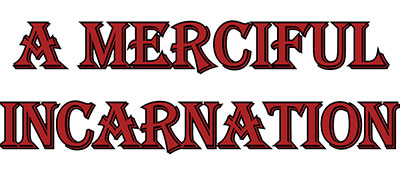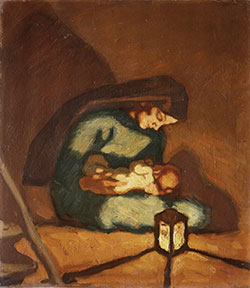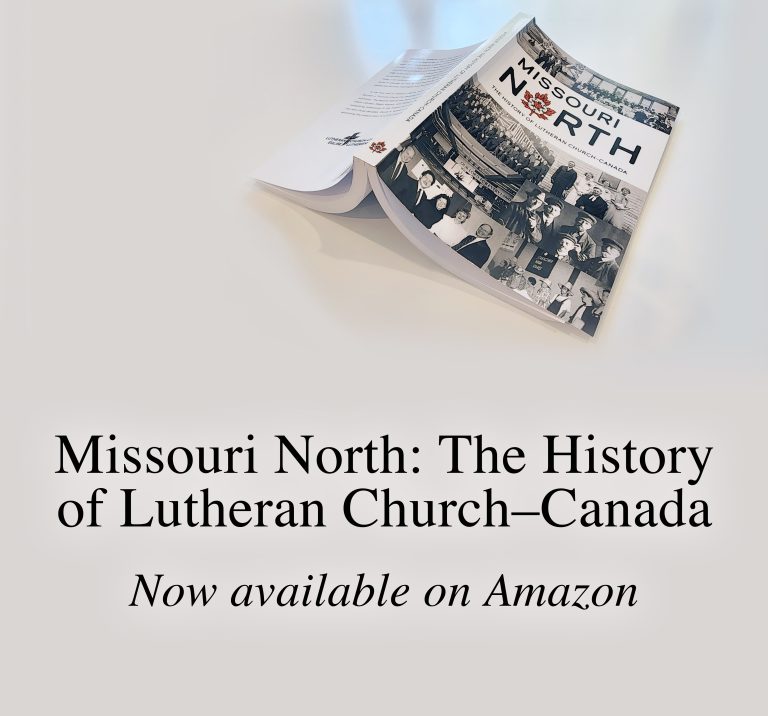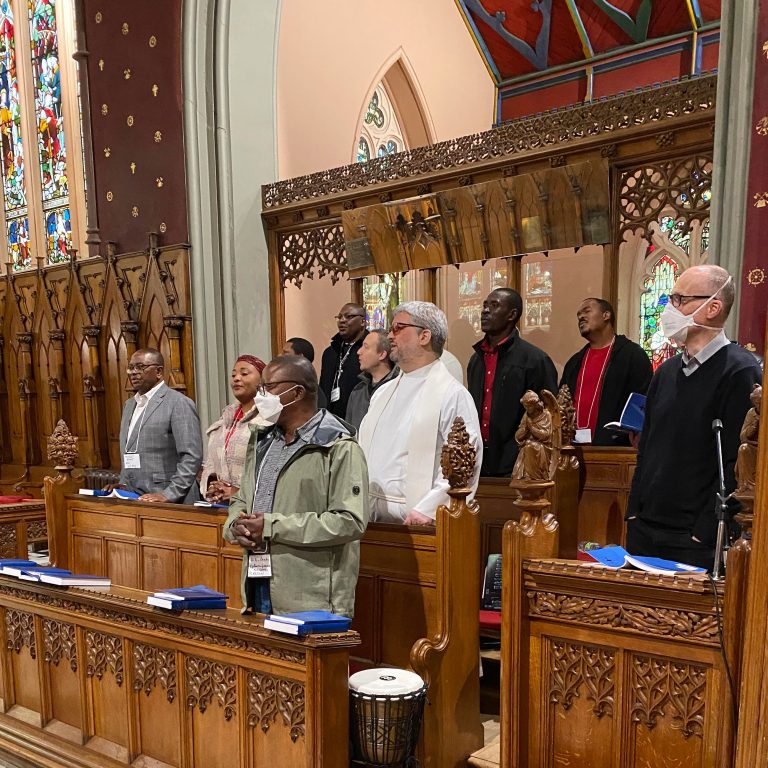A merciful incarnation


by Ted Giese
By the mystery of Your holy incarnation; by Your holy nativity; by Your baptism, fasting, and temptation, by Your agony and bloody sweat; by Your cross and passion; by Your precious death and burial; by Your glorious resurrection and ascension; and by the coming of the Holy Spirit, the Comforter.
Help us good lord.
At the beginning of this prayer—part of the Litany—we are reminded of the incarnation of our Lord. It’s something we also confess regularly in the Creeds: as the Nicene Creed puts it, “He was incarnate by the Holy Spirit of the Virgin Mary.” But what is the incarnation? What does it mean for Christians today?
It’s an understandable enough question, given the Christmas season. In short, the incarnation is the point in history when the Word became flesh and came to dwell among us. It is the moment when, as the Athanasian Creed puts it, “perfect God” became also “perfect man” in Jesus Christ—“composed of a rational soul and human flesh.”
At times in the history of the Church, this has been a hot button issue. There are still some erring sects and heretical groups with a poor or false understanding of who Jesus is, and what the incarnation means. These errors run the gamut from the subtle to the strange, but what they generally do is rob Christianity of the great and wonderfully tangible gift of mercy God gives in the incarnation. The world can lead us to think that spiritual things are intangible and somehow unphysical—in other words, something cut off from daily life. Something ethereal and unearthly. Something you can’t touch. The incarnation of Jesus, however, tells us that’s not the case.
Copies of heavenly things
Throughout the Old Testament, God the Father, Son, and Holy Spirit gave His people tangible things to grasp onto in the midst of troubles and suffering. Remember the account from the book of Numbers: the sinful children of Israel were plagued by fiery serpents in the wilderness on account of their sin. But when they asked in repentance for mercy, God commanded Moses saying, “Make a fiery serpent and set it on a pole, and everyone who is bitten, when he sees it, shall live” (Numbers 21:8). Here, God gives something physical as a promise of His mercy.
 These physical promises were not “idols,” but rather “copies of heavenly things” (Hebrews 9:23). God didn’t want these things to be worshiped (though, we learn, some people abused them in that way). Instead, what God wanted was to provide something for His people to hold onto while they waited the coming of the promised Messiah. Jesus draws this connection Himself while speaking with Nicodemus, saying the bronze serpent made by Moses foreshadowed the Christ: “As Moses lifted up the serpent in the wilderness, so must the Son of Man be lifted up, that whoever believes in Him may have eternal life” (John 3:14). The tangible serpent set on a pole pointed to Jesus who would be nailed to the cross and lifted up in crucifixion.
These physical promises were not “idols,” but rather “copies of heavenly things” (Hebrews 9:23). God didn’t want these things to be worshiped (though, we learn, some people abused them in that way). Instead, what God wanted was to provide something for His people to hold onto while they waited the coming of the promised Messiah. Jesus draws this connection Himself while speaking with Nicodemus, saying the bronze serpent made by Moses foreshadowed the Christ: “As Moses lifted up the serpent in the wilderness, so must the Son of Man be lifted up, that whoever believes in Him may have eternal life” (John 3:14). The tangible serpent set on a pole pointed to Jesus who would be nailed to the cross and lifted up in crucifixion.
The fiery serpent on the pole was a copy of an eternal and heavenly thing—and not just any thing but Jesus Christ. How curious and amazing to think that because of the incarnation, the Second Person of the Holy Trinity—God Himself—was physically present in the flesh and nailed to the wood of the cross for you. Heaven above was brought to Earth in the womb of Mary for this very purpose. The pain and suffering and sin of man were brought into the Godhead through Christ Jesus at the crucifixion. As St. Paul puts it, “For our sake God made Jesus to be sin who knew no sin, so that in Christ Jesus we might become the righteousness of God” (2 Corinthians 5:21).
God reaches out to touch you
God provides mercy upon mercy for His people. In the story of the bronze snake, God did not leave His people empty handed. No, He gave them tangible things to grasp onto. In the same way, He gives you tangible things to grasp onto. But the gifts you receive are different than the ones received in the Old Testament. They’re different because they’re not rooted in a Saviour who is to come, but rather they are rooted in a Saviour who has come. The Saviour has been incarnated. And so in the tangible gift of Baptism, the Holy Spirit puts faith into you and washes away sin with words you can hear and water you can feel. In the Lord’s Supper, Jesus puts his flesh and blood physically into your mouth, forgiving sin and strengthening faith; He speaks to you with words you can hear and bread and wine you can touch and taste.
God reaches out to you with His Word: the Father opens your ears and the Holy Spirit enters in, making the Word fall upon your heart. God puts people in your life to take His Word and read it to you, and teach it to you, and place it in your hands to hold. In these ways, though you don’t deserve Him, the incarnate Lord comes and touches you.
Though you don’t deserve Him, the incarnate Lord comes and touches you.
All of this is possible because Jesus is both true God as well as a living breathing man. Consider the testimony of St. John. He stood with Jesus on the Mount of Transfiguration. He was there at the institution of the Lord’s Supper. He stood at the foot of the cross with Mary and stood at the empty tomb with Saint Peter. He was there in the upper room and saw the resurrected Christ and ate with Him. He stood at the place of the Lord’s Ascension into heaven.
This man—who saw and knew Christ throughout His ministry—testifies to the nature of the incarnation: “That which was from the beginning, which we have heard, which we have seen with our eyes, which we looked upon and have touched with our hands, concerning the word of life—the life was made manifest, and we have seen it, and testify to it and proclaim to you the eternal life, which was with the Father and was made manifest to us—that which we have seen and heard we proclaim also to you, so that you too may have fellowship with us; and indeed our fellowship is with the Father and with His Son Jesus Christ” (1 John 1:1-3).
This is the heart of the incarnation: God is no longer far from us, God is not simply pointed at by copies of heavenly things but rather known directly in the person of Jesus Christ. As St. John says, in Christ Jesus, God was “seen with our eyes.” In Jesus, God has been “looked upon” and “touched with our hands.” Jesus is not a sign; He “is the image of the invisible God, the firstborn of all creation” (Colossians 1:15).
The incarnation and art
 At the beginning of this article, I quoted a small part of the Litany as an example of something that reminds us of the incarnation. This prayer is a literary reflection on the incarnation. In its own way it too is a “copy of heavenly things.” This is what the arts can become when they are creatively applied in the service of Jesus Christ. Hymns, songs, books, paintings, sculptures, crèches—in fact, a multitude of other tangible things can point us to the incarnation of Christ.
At the beginning of this article, I quoted a small part of the Litany as an example of something that reminds us of the incarnation. This prayer is a literary reflection on the incarnation. In its own way it too is a “copy of heavenly things.” This is what the arts can become when they are creatively applied in the service of Jesus Christ. Hymns, songs, books, paintings, sculptures, crèches—in fact, a multitude of other tangible things can point us to the incarnation of Christ.
They must not, of course, become the object of worship. This is what happened to the bronze serpent God commanded Moses to make: it was destroyed in the time of King Hezekiah because people had begun to worship it. It was no longer looked upon as a copy of heavenly things but instead as if it were a god itself. Such misplaced worship is a terrible thing (2 Kings 18:4).
But on the other hand, when we follow the first three commandments while remembering that Jesus is “the image of the invisible God,” then we realize that the arts may be of benefit to the troubled soul. Because Christ opens for us the Christian freedom to express the mercies of the incarnation in tangible ways to a world plagued by sin, death, the devil, and the weakness of men, now the useful arts are a benefit to the troubled soul. Still, even at their finest such art is like bronze next to gold; they pale in comparison to the gold found in Baptism and the Lord’s Supper, blessed places where we are privileged to interact directly with the incarnate Son of God. In Baptism, he claims us as His own; and in Holy Communion, He—to borrow the words of the great hymn—gives His own self to us for heavenly food. All the while He speaks to us from His Word, speaking directly to us of His mercy.
Christ opens for us the Christian freedom to express the mercies of the incarnation in tangible ways to a world plagued by sin, death, the devil, and the weakness of men.
In this Christmas season, remember that a beautifully designed Christian Christmas Card, a well-appointed Nativity Scene, or even a Scripturally faithful ornament may be just the thing the broken hearted need to grasp the Good News of the incarnation. It may be the thing they need to remember that, at just the right time, “the Word became flesh and dwelt among us.” By this incarnation, we are mercifully delivered from the hands of our enemies into the Hand of God in a tangible way. And while it may feel like we are gripping on to Him, we know the deeper truth that it is Christ who has us firmly in His grasp.
——————–
Rev. Ted Giese is Associate Pastor at Mount Olive Lutheran Church in Regina.





